【下記の日本語訳をご参照ください】
The Hacking Heart hackathon was held at Central Saint Martins, London, UK, on 4-8 November 2019 (full programme here). Prof. Nohara and the team reflected on the interdisciplinary exchanges performed during their weeklong project.
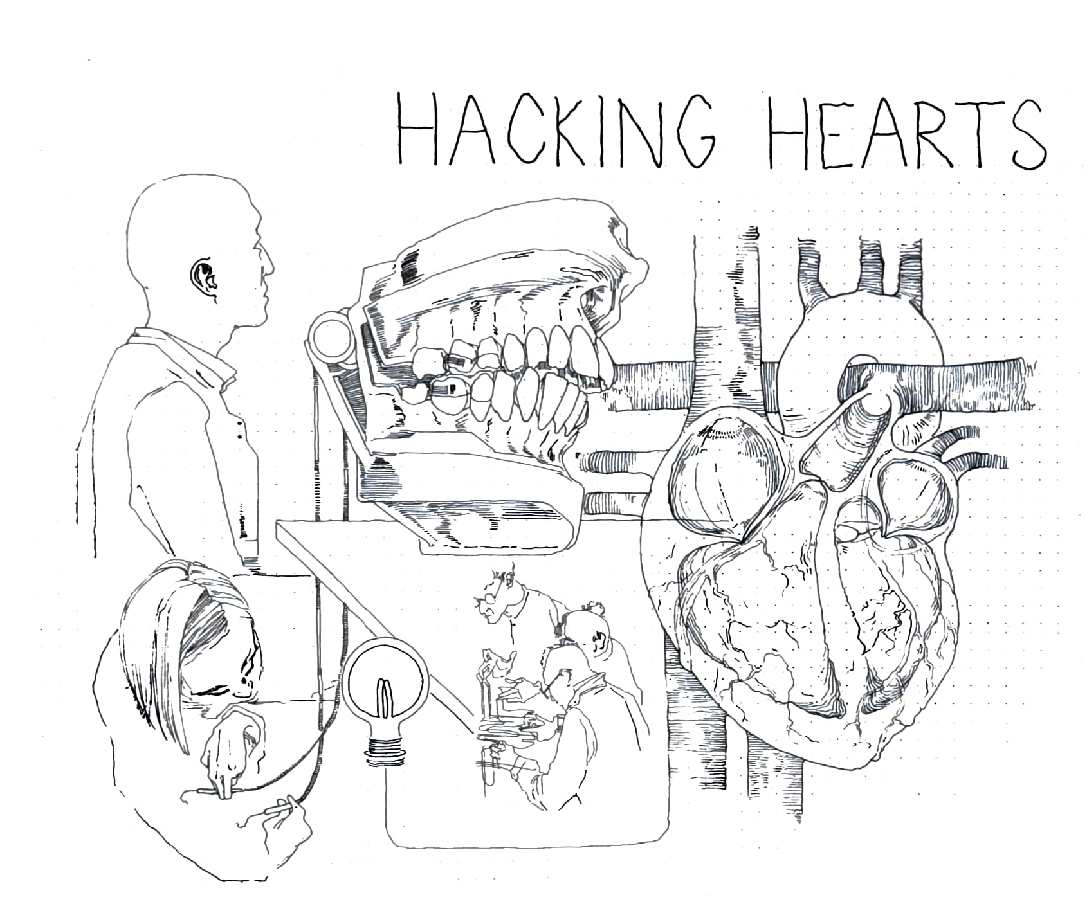
“After day one I was a bit overwhelmed by the presentations – there’s a lot to absorb”. Participants and organisers of the Hacking Heart hackathon sat down 10 days later to reflect on the event. The project was a weeklong experimental collaboration between scientists and Art & Design students, held on 4-8 November 2019 at Central Saint Martins college (CSM) in London, UK. The activities were designed to interrogate and reimagine contemporary scientific research centred on heart disease, energy harvesting and cellular sensing. Talking to the organisers Dr Heather Barnett and Dr Ulrike Oberlack, the students described the initial difficulties in accessing scientific language and content delivered by the scientists, “I had more one-on-one experience discussing the research with the scientists that cleared up a lot of misunderstandings… it helped with our research and planning before we went to discuss it with the scientists”. Researchers from the Tokyo Institute of Technology (Tokyo Tech) and Queen Mary University of London (Queen Mary) worked with the organisers and 12 students from across a range of postgraduate courses at CSM (MA Art and Science, MA Design Furniture, MA Graphic Communication Design, MA Industrial Design, MA Jewellery Design, and MA Performance Design and Practice). Over the course of the week, the workshops facilitated a fertile exchange of ideas between artists and scientists. Each of the three groups of students produced a performance, delivered to participants and members of the public in a symposium on the last day.
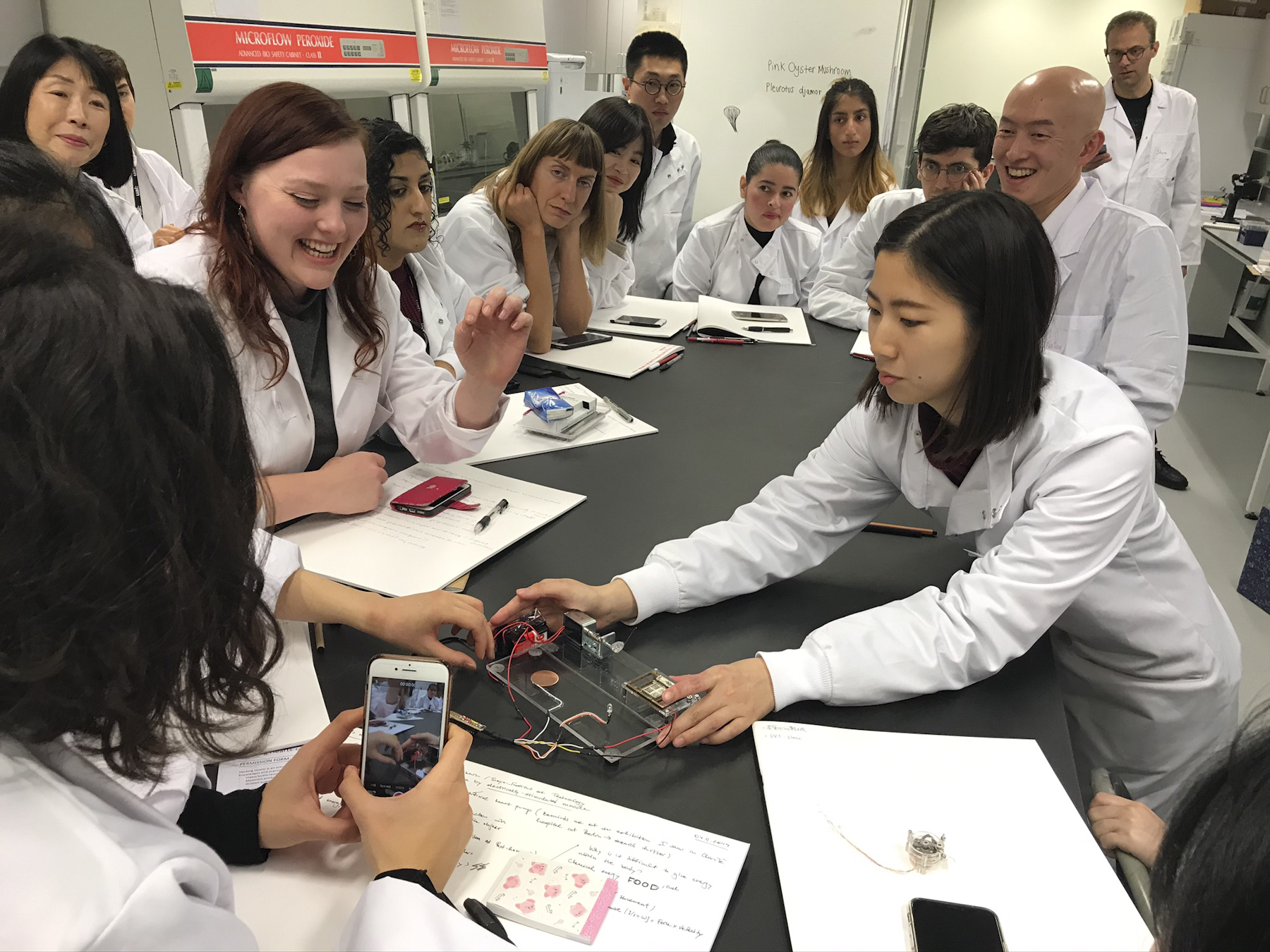
Initially, the event presented the typical difficulties of working collaboratively. “At the beginning we have a lot of ideas about the project, about the Hacking Hearts, how to show that, but, finally, we should give up some of them, some things are not very strong or some things not very connected, not very related”. The students learned to sacrifice some ideas to build up a clear outcome. “It was that phrase that consumed my mind: that a horse designed by committee could look like a camel”, the group laughed.
“It was that phrase that consumed my mind: that a horse designed by committee could look like a camel”
On the first day, the scientists shared their work in biotechnologies for the students to hack over the course of the week, ending with a public symposium on 8th November. Dr Thomas Iskratsch (Queen Mary) presented his research on biotechnological approaches for preventing and curing heart disease. Integrating biology with engineering, bioengineering solutions employ a combination of cells, signals and materials to create tissues outside the body that “will give us insights into disease processes, which in the future might aid design of novel drugs”. Dr Iskratsch researches the ways in which heart cells measure muscular stiffness by using simplified systems to investigate specific parameters in isolation, such as rigidity or shape. The students were invited to respond to his research and develop a “transdisciplinary translation” of its contents, as part of a wider effort to create a “third place bridging science/tech and art/design through communication”, as the organisers described.
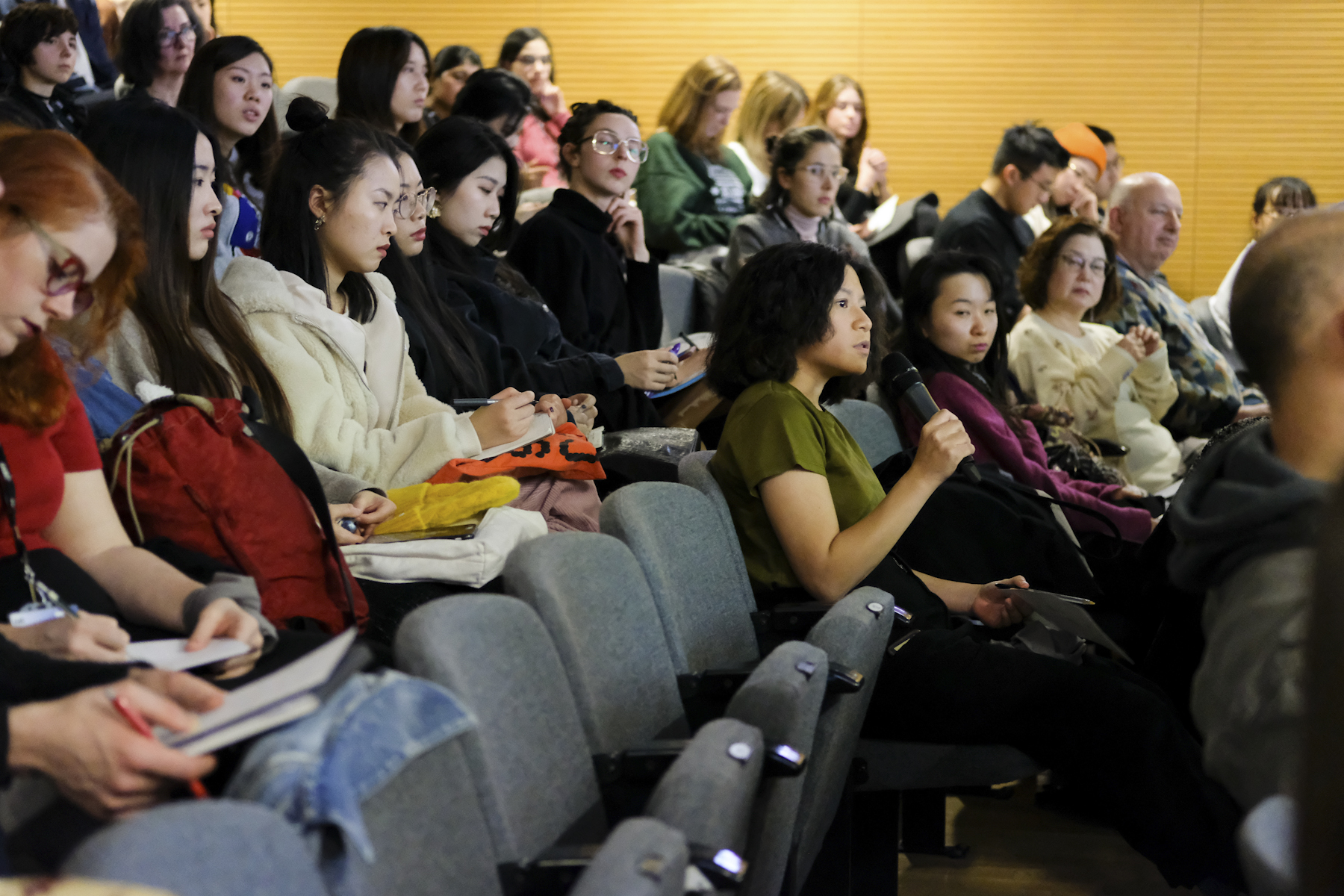
The research discussed by Prof. Wataru Hijikata (Tokyo Tech) provided additional food for thought. His presentation gave a quick overview of his work on energy harvesting systems that can be implanted in the human body, such as those required to power artificial heart pumps. The students responded to this work by creating props for a performance built around the idea of natural and artificial heartbeats. This inspired a question about accuracy during the symposium’s Q&A, as according to the students, by engaging with scientific content artists can “try to accurately communicate [in a] very certain and interesting way to a wider public audience, or you can go down the route where you’re just using as a jumping-off point, something to interpret, something to inspire you”.
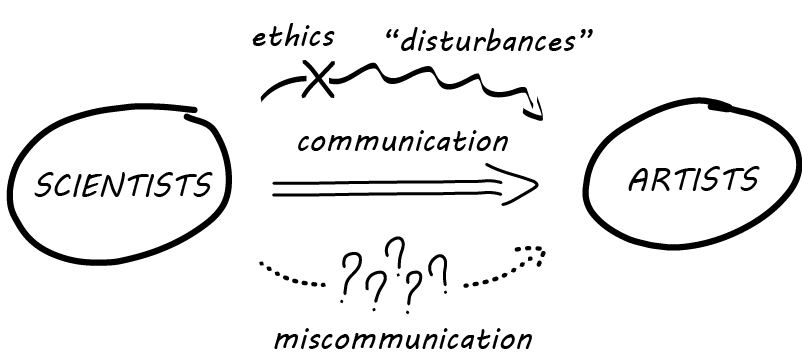
The experience also changed the scientists’ own perception of what could be possible through collaboration with artists. On a straightforward level, Hijikata had to censor the content of his presentation to avoid discussing ethically challenging methods, such as the use of animal testing in research. This triggered a sort of suspicion about scientific procedures but resulted in a positive artistic outcome. For the scientist, “some disturbances are necessary for making impressive emotional performances”. He admired the performance about the beating hearts, which showed the essence (if not the details) of his research had been received appropriately by the students. For him, the value of art lies in translating scientific information into emotions. He compared his experience of the performance with that of watching the Japanese martial art of Kendo, “you’re very close in that moment – there’s no distance”. This was a superb achievement for the students. “I think that a lot of artists would aspire to this”, the organisers noted.
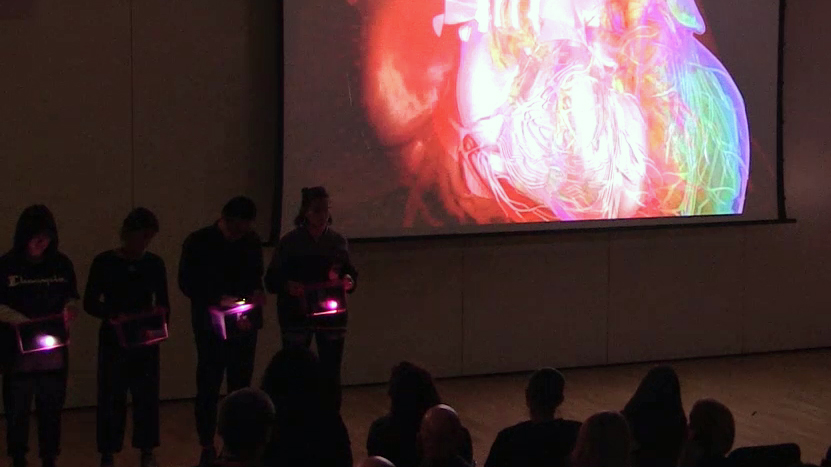
By working with people with “different disciplinary knowledge, methods and mindsets”, the participants explored and reinterpreted social, ethical and philosophical dimensions of scientific research. In her role as Social Scientist in Residence at CSM, Prof. Nohara observed and reflected on the hybrid nature of those interactions. The team observed, “I guess the creative process generally goes through several phases of diversion, conversion, diversion, conversion, diversion, conversion. It’s sort of when you hit a problem, you then open it up and then have to close it down, and then you’ve got another problem”. The social dimension involved in collaborating with others can lead to the attempt to include all voices and “embrace everything”. But achieving a definite outcome requires some final convergence of views. This was compared to an artist’s creative process, embracing all ideas at the start only to reject, select and develop components later.
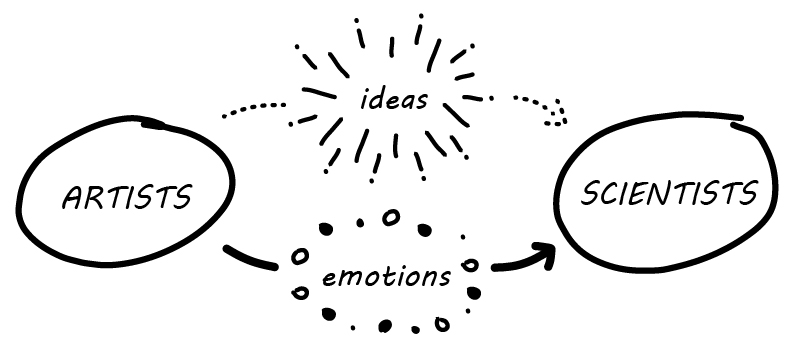
During the hackathon, thinking creatively was promoted by exercises such as exploring alternative meanings for the words used in the scientific presentations. “It was really interesting how we all had different kind of ideas about some of the words”, the students convened, pointing out differences in specialised knowledge and personal interests among the participants. “So, the strategy worked in inviting inspiration?”. A student confirmed, “I think that helped everyone open up and look at it a little bit more creatively [free] instead of just thinking in terms of […] how to interpret that research”.
“The ‘right’ is when you’re feeling connected enough to the artwork so that what you’re proposing has some sort of plausibility to it, but far enough away so that it is not a one-on-one translation”
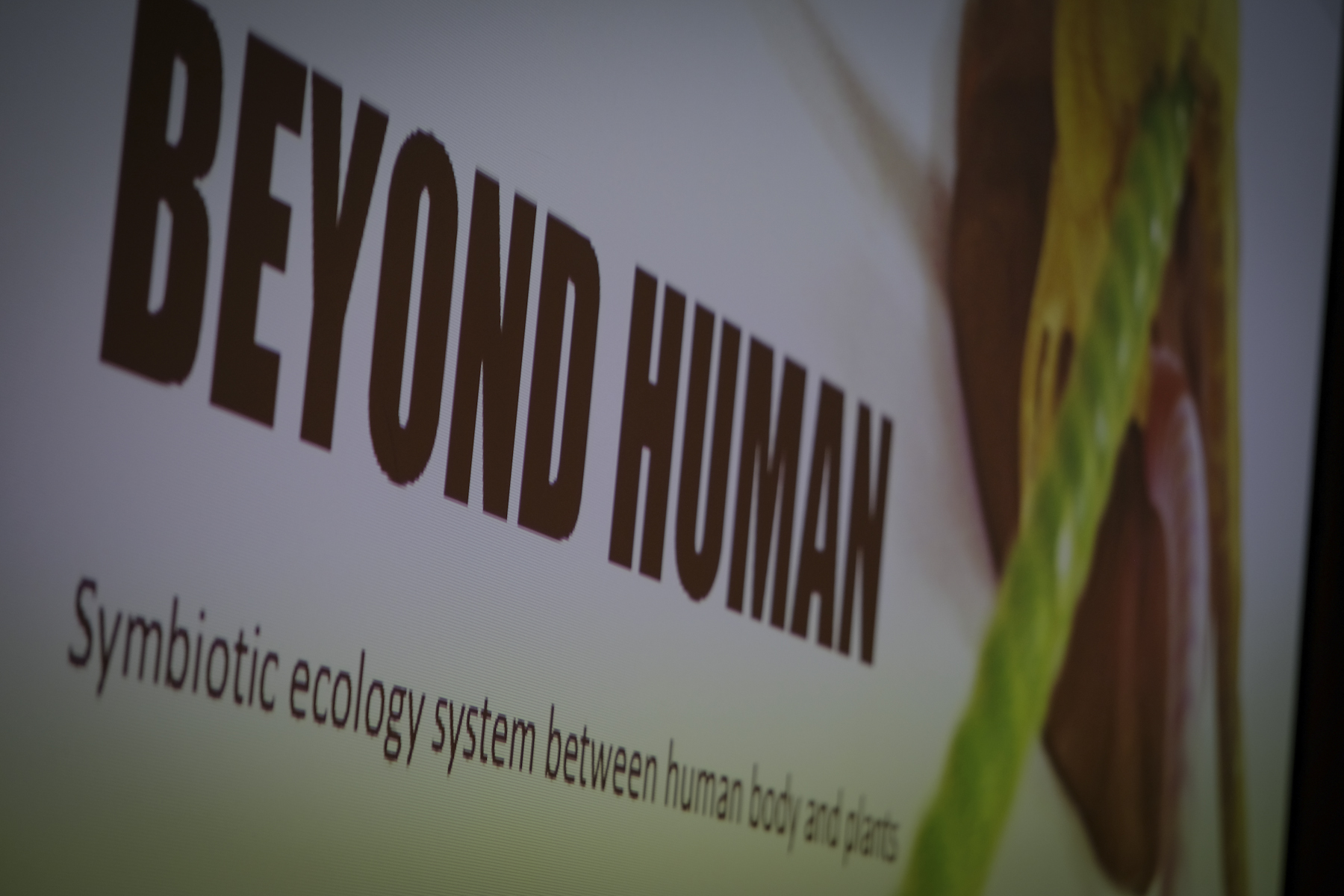
The programme of events concluded on 8th November with a public symposium, during which the scientists presented their work to the audience and the students performed work created in response to the discussions held during the week-long activities. Four students entered the stage in the dark holding heart-like luminous objects while a projected video asked, “Can you distinguish between the different heartbeats? Healthy heart, unhealthy heart, pacemaker, artificial heart”. The audience was invited to participate in the performance and answer the question by beating different materials. Their active engagement surprised even the artists, “it was amazing that in one moment […] was interacting and it was very beautiful to see that”. This mimicked the contents of the presentation given by Prof. Hijikata but provided an alternative take on the issues.
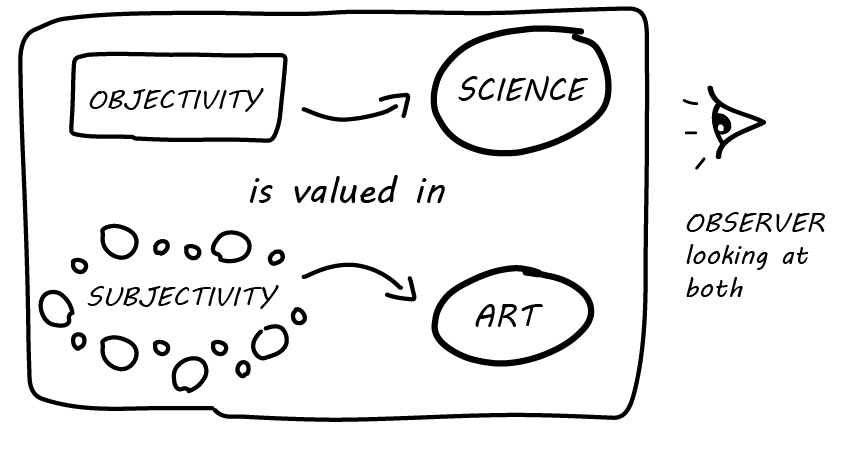
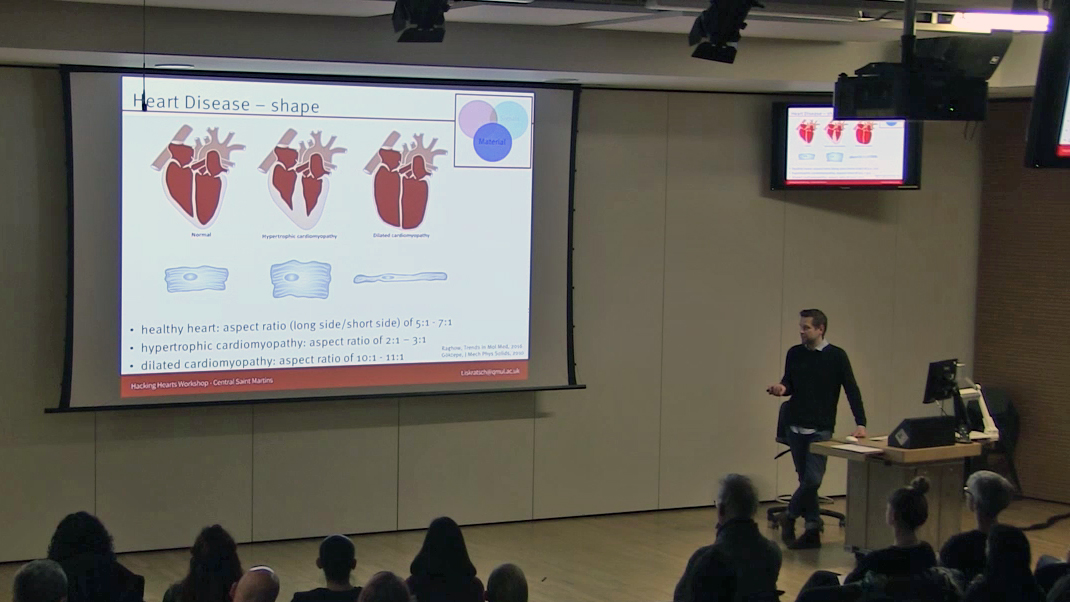
Finally, the participants agreed on the importance of having a symposium at the end of the week, “I think that even though we know that there was no specific outcome required, there was – because of the symposium. I think without that, we may not have formulated pieces that were ready to show”. The participants appreciated the pressure given by the tight schedule and linked their productivity to it, “It wasn’t stressful. It was more trying to come up with creative solutions in order to get to a place where we were satisfied that the audience would have something somewhat finished to interpret”.
“So that was quite nice to go out of your comfort zone and I feel like I want to push that a bit further maybe in my own work”
Beyond the success of the project for the team and their audience, the experience left a mark on individual artists, e.g. inspiring further performative elements and using materials closer to those the scientists employ in their work. “So that was quite nice to go out of your comfort zone and I feel like I want to push that a bit further maybe in my own work”. The discussion concluded with positive remarks about continuing the collaboration with Dr Iskratsch, who is also based in London, and plans for a potential exhibition at the Science Museum to produce a physical body of work aside from the performances.

「Hacking Heart」ハッカソンプロジェクト(http://www.tse.ens.titech.ac.jp/~deepmode/en/event/hacking-hearts-4-8-nov-2019/)は、2019年11月4〜8日に英国ロンドンのセントラルセントマーチンズ大学(CSM)で開催された、科学者とアート&デザインの学生による1週間にわたる実験的なコラボレーションワークショップです。東京工業大学とロンドンのクイーンメアリー大学の研究者が、CSMのさまざまな大学院コースからの12人の学生と協働しました。
初日、科学者たちは、学生がハックできるように、バイオテクノロジーの研究を紹介しました。学生によると、科学的なコンテンツに取り組むことによって、アーティストはより広い聴衆に非常に確実で興味深い方法を用いてコミュニケーションを試みことができます。一方、この経験によって、アーティストとのコラボレーションを通じて何が可能であるかについての科学者自身の認識も変えました。
参加者は、「さまざまな分野の知識、方法、考え方」を持つ人々と協力することにより、科学研究の社会的、倫理的、哲学的側面を探求し、再解釈しました。UALの社会科学者として、野原教授は、アート・デザインの大学院生のチームで、科学と工学の議論がどのように翻訳され、言い換えられ、再表現されたか、ワークショップ中のすべての参加者間のコミュニケーションと相互作用のハイブリッドな性質を観察し、分析しました。
イベントは11月8日に公開シンポジウムで終了しました。このシンポジウムでは、科学者が作品を発表し、学生は過去4日間の活動で行われた共同ディスカッションに基づいて作成された作品を発表しました。次に、参加者は、科学的知識の伝達(設計手法の使用など)と、アーティストが作品のあいまいさのレベルを維持する必要性との違いについて話し合いました。彼らは自分たちのパフォーマンスを、サイエンスコミュニケーションの演習ではなく、「一種の仲介」と見なしていました。
このプログラムの活動は、互いの強みを強化し、材料や機械への関心など、既存の類似点を強調することで、分野間のギャップを埋めることに成功しました。その上、この経験は、さらなるパフォーマンスのアイデアを与え、科学者が仕事で使用するものに近い材料を使用するなど、個々のアーティストに痕跡を残しました。議論はロンドンのイスクラッチ博士とのコラボレーションを継続することの前向きな発言で締めくくられました。彼は、パフォーマンスとは別に、物理的な作品を制作するために科学博物館での展示を計画しています。